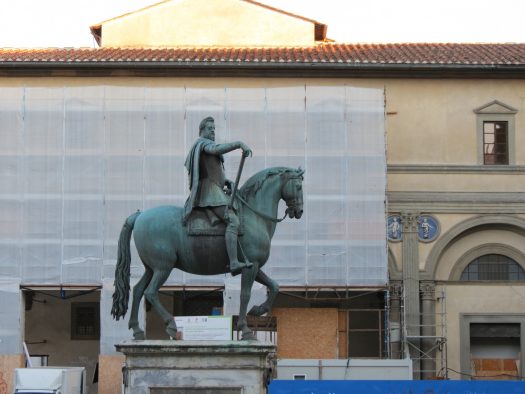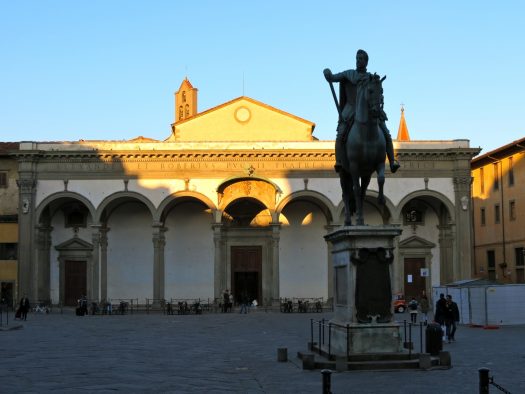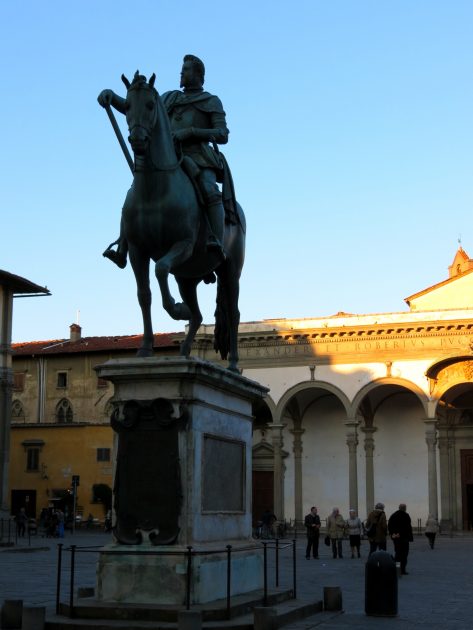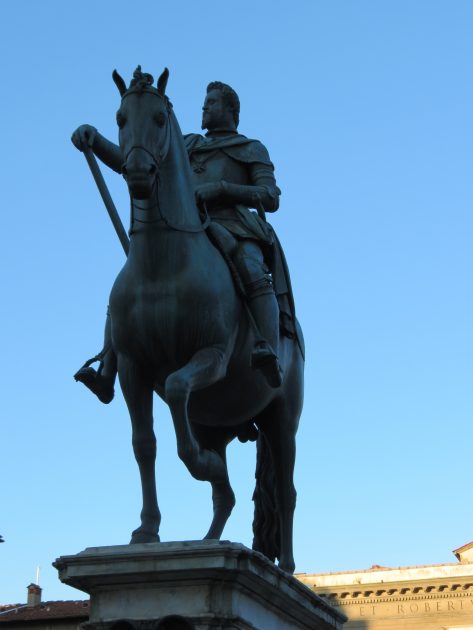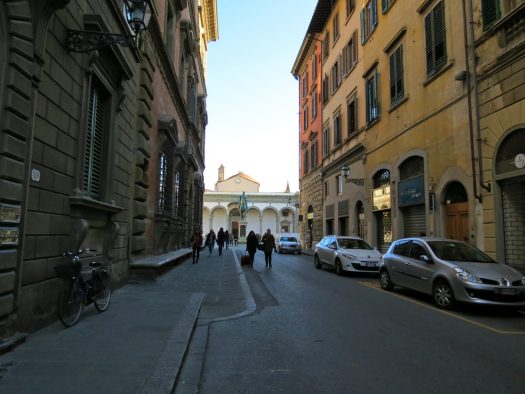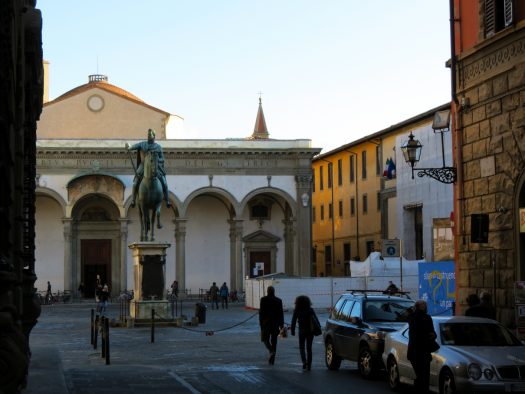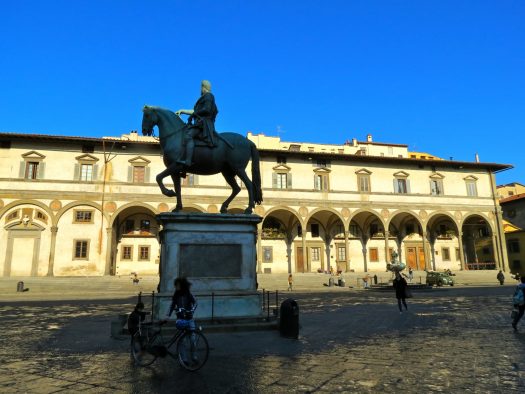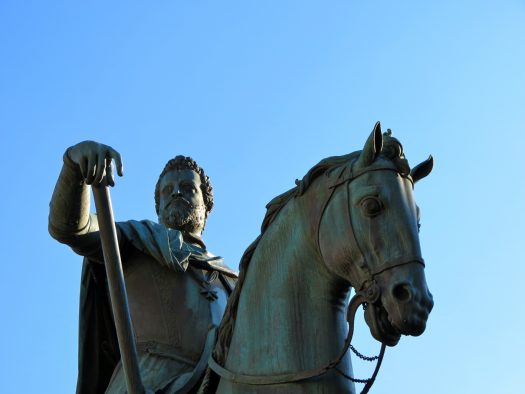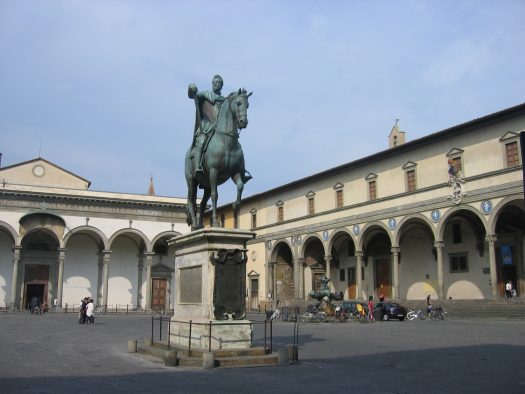- CountryItaly
- Town:Florence
-
Year of creation:1608
- Rider(s):Ferdinando l
(1549 –1609) was Grand Duke of Tuscany from 1587 to 1609
He was made a Cardinal in 1562 at the age of 14, but was never ordained into the priesthood. At Rome, he proved an able administrator. He founded the Villa Medici in Rome.
When his brother Francesco I died in 1587, Ferdinando succeeded as grand duke at the age of 38. For the first two years of his reign, he retained his position as cardinal, but he gave it up in order to marry Christina of Lorraine in 1589
In many ways, Ferdinando was the opposite of his brother who preceded him. Approachable and generous, he set out to rule mildly. He re-established the justice system and was genuinely concerned about the welfare of his subjects. During his reign, Tuscany revived and regained the independence his brother had given up.
Ferdinando fostered commerce and gained great wealth through the Medici banks, which were established in all the major cities of Europe. He enacted an edict of tolerance for Jews and heretics, and Livorno became a haven for Spanish Jews as well as other persecuted foreigners.
he greatest cultural achievement in Florence during Ferdinando’s reign was the introduction of opera to Europe. For the wedding of Ferdinando’s niece Marie de’ Medici to King Henry IV of France in 1600, his court sponsored a lavish performance of one of the first notable operas, Jacopo Peri’s Euridice.
Ferdinando’s foreign policy attempted to free Tuscany from Spanish domination.
Ferdinando strengthened the Tuscan fleet, and it saw victories against pirates on the Barbary coast in 1607 and against a superior Turkish fleet the following year. - Sculptor(s):Giambologna and Tacca
Giambologna, born as Jean Boulogne, incorrectly known as Giovanni da Bologna and Giovanni Bologna (1529 – 13 August 1608), was a sculptor, known for his marble and bronze statuary in a late Renaissance or Mannerist style.
Giambologna was born in Douai, Flanders (now in France). After youthful studies in Antwerp with the architect-sculptor Jacques du Broeucq, he moved to Italy in 1550, and studied in Rome. Giambologna made detailed study of the sculpture of classical antiquity. He was also much influenced by Michelangelo, but developed his own Mannerist style, with perhaps less emphasis on emotion and more emphasis on refined surfaces, cool elegance and beauty. Giambologna spent his most productive years in Florence, where he had settled in 1553. He was one of the Medici most important court sculptors. He died in Florence at the age of 79 – the Medici had never allowed him to leave Florence, as they rightly feared that either the Austrian or Spanish Habsburgs would entice him into permanent employment.Pietro Tacca (1577 –1640) was an Italian sculptor, who was the chief pupil and follower of Giambologna. Tacca began in a Mannerist style and worked in the Baroque style during his maturity.
He joined Giambologna’s atelier in 1592. Tacca took over the workshop of his master on the elder sculptor’s death in 1608, finishing a number of Giambologna’s incomplete projects, and succeeding him almost immediately as court sculptor to the Medici Grand Dukes of Tuscany. Like his master he took full advantage of the fashion among connoisseurs for table-top reductions of fine bronze sculptures.Tacca began by finishing Giambologna’s equestrian bronze of Ferdinand de’ Medici for the Piazza della SS. Annunziata, a project in which he had participated at every stage, from the terracotta models to the casting process in the fall of 1602 and the finishing (by 1608). This work was cast with the bronze from the cannons of captured Barbary and Ottoman galleys, taken by the Order of Saint Stephen, of which the Grand Duke Ferdinando I de’ Medici was Grand Master.
